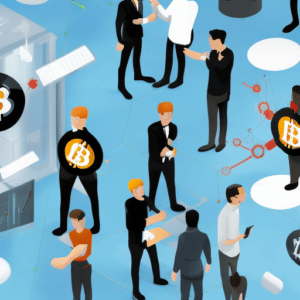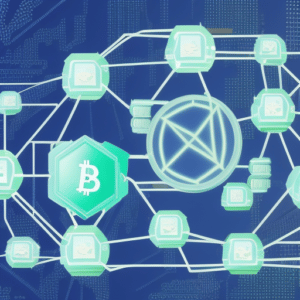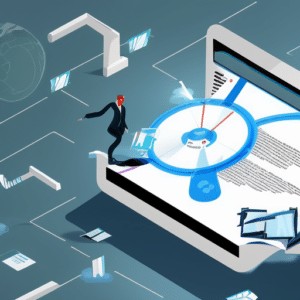As Web3 becomes more popular, people are starting to look for a quick beginner’s guide to it.
In this article, we will give an overview of what Web3 is, how it works, and why it is needed in simple terms. We will also explain how Web3 can solve the problems with Web2 and why it might replace Web2.
Overview
The Web3 Research Institute is reader-supported. When you buy through links on this site, we may earn a commission at no cost to you.
A Brief Overview of Web1, Web2, and Web3
It is hard to believe that the Internet is only a few decades old. In that short time, the Internet has undergone two major iterations: Web1 and Web2. If you are a beginner who is not familiar with these terms, here’s a quick guide to Web1, Web2, and Web3.
Web1 vs. Web2
Web1 first emerged in the 1990s. It was a revolutionary way to access information, but it was very basic. People could only look at websites.
Web2 arrived in the 2000s and is the current version of the Internet. It is interactive, meaning that people can create, share, and like content. This has enabled a more dynamic user experience.
Although Web2 has changed how we communicate online, it still works the same way as Web1. People use browsers to connect to servers, go to websites, and see content. This is known as the “client-server” model.
Web2 vs. Web3
Web3 is very different from Web2. In the Web2 era, a few big tech companies like Google and Meta have come to dominate how we interact online. Web3 aims to bring the power back to the people. It uses a set of technologies that are based on a “peer-to-peer” model, where a distributed network of computers hosts applications rather than a company’s server. This approach could make the Internet more democratic, secure, private, and transparent.
How Does Web3 Work?
Web3 is based on blockchain technology, which gives people more control over their data and digital identities. With blockchain, people use a “private key” to access their data. This key is very important because it keeps people’s data safe and secure. Nobody can access their data without this key.
In addition, blockchain technology provides better privacy protection and security. This is because user data is spread out across different computers. Hackers cannot get all the information they need to access a user’s account from one place.
When Did Web3 Start?
Although we have not realized the vision of Web3 yet, some key components have emerged in the past few years. There are now thousands of cryptocurrencies and non-fungible tokens (NFT) in existence. Some decentralized applications (dApps), decentralized finance (DeFi) platforms, and decentralized autonomous organizations (DAO) are also fully functional.
In addition, we are starting to see some big venture capital firms invest in Web3 businesses. This means they see potential in Web3 and want to help it grow. With more investment, we can expect to see more innovation in the Web3 space.
Why Do We Need Web3?
The Internet has come a long way since its early days, but Web2 is still far from perfect. We need Web3 for three main reasons:
1. Web2 allows businesses and governments to have control over user data. This has led to censorship, surveillance, data breaches, and other problems.
2. A few tech companies dominate the web today. Companies like Google and Meta can control what we see and do online.
3. Web2 is not very secure. Hackers can easily exploit vulnerabilities to access sensitive data.
Can Web3 Solve the Problems of Web2?
Web3 has the potential to address the problems of Web2 for two reasons:
1. Web3 is decentralized. This means there is no central authority controlling the flow of information. As a result, Web3 is much more resistant to censorship and intrusion. It also gives users more control over their data.
2. Web3 uses blockchain technology. This technology provides a high level of privacy and security. It also makes it difficult for big tech companies and governments to censor what people do online.
Will Web3 Replace Web2?
At Web3 Research Institute, we think Web3 will eventually replace Web2 for four reasons:
1. Web3 is more democratic than Web2 because it gives people a say in what happens.
2. Web3 is more secure than Web2 because it is harder for hackers to steal data.
3. Web3 gives people more control over their data and digital identity.
4. Web3 can help businesses and consumers have a more transparent and trustworthy relationship.
Final Thoughts
Web3 is the next step in the evolution of the Internet. It has the potential to create a more democratic, secure, private, and transparent Internet for everyone.
Although Web3 is still in its early stages, we think it can solve many of the problems with Web2. But only time will tell whether Web3 will replace Web2.
Related Articles

The 55 Best Web3 Certifications in 2023
Read our list to find the best Web3 certification that can help increase your chances of advancing in this exciting field!

The 35 Best Web3 Grants in 2023
To help Web3 professionals keep up with the latest trends and technologies, we’ve compiled a list of 35 grants that are currently available.

The 104 Best Crypto White Papers
If you’re looking for the best crypto white papers, look no further! In this roundup, you’ll find our 104 top picks of the year.
